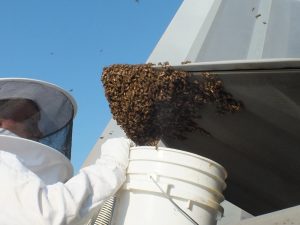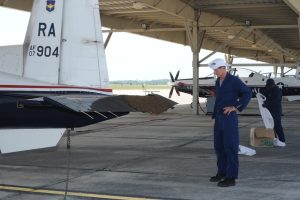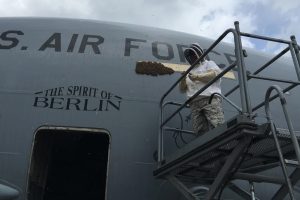Over its 70 years of service, the C-130 and its variants have borne a range of weapons including cannons, cruise missiles, and radar jammers. But an MC-130J assigned to the Pennsylvania Air National Guard’s 193rd Special Operations Wing accidentally bore a uniquely fearsome weapon late last month: a swarm of honeybees.
“We’re considering a change in aircraft designation,” the wing joked in a video posted to Facebook on Sept. 4 of a man in a beekeeping mask scraping bees off the aircraft’s right side inflight air refueling pod. “How do we feel about Bee-130?”
The man was Jim Davis, a bee hobbyist with the central Pennsylvania-based Capital Area Beekeepers Association. The wing called him in to remove the bees rather than exterminate them.
“We identified, with the help of our civil engineers, they were honeybees,” said wing spokesperson Senior Master Sgt. Alexander Farver. “We knew how important honeybees are to the local ecosystem. So even though it was a slight inconvenience, we chose to protect and preserve them.”
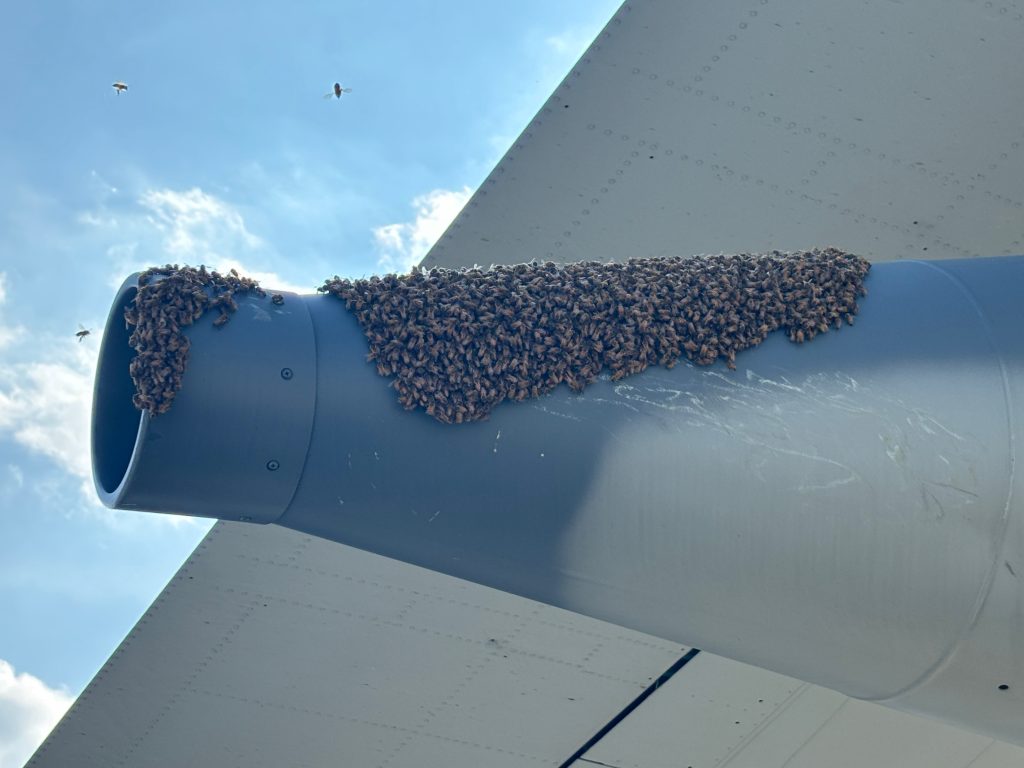
It was Davis’ first time responding to a military base. Lethal as U.S. Airmen are, some threats demand an expert’s touch.
“Everyone was super friendly,” he said. “A few of them weren’t too sure they wanted to be that close to the bees.”
How did a swarm of bees wind up on the aircraft in the first place? There must have been another hive nearby, Davis said.
“What happens is the original hive makes a new queen, and then the old queen normally will gather up a large bundle of the nurse bees and the foraging bees and take off with them,” he explained. “They find a place where they can land until the scout bees can find a home for them. If we had left them on the plane, they would have probably found a new home within a day or so.”
Iowa State University describes swarming as “a natural process in the life of a honeybee colony” which often occurs in response to crowding within the colony.
Indeed, the Pennsylvania bees had originally stopped on a maintenance stand but moved when the stand was moved, though some bees stayed behind and were removed by the beekeeper, who brushed them into a cardboard box. As frightening as a swarm of bees might look, this group of wanderers was not in a fighting mood.
“When you get a swarm like that, they are not interested in stinging or fighting or anything like that,” Davis said. “They’re just taking care of their queen. I could have gone up there with bare hands and got them in the box.”
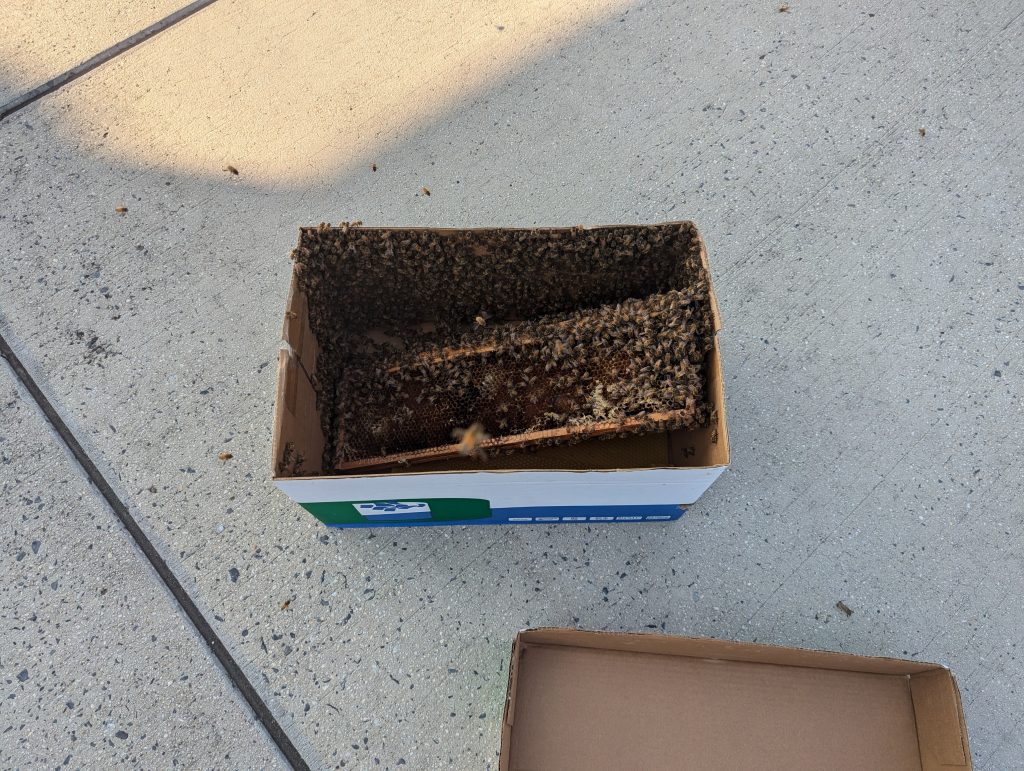
Honeybees feed prior to swarming, reducing their ability to sting, according to Iowa State University. They are also farther from their nest, which houses their offspring and food stores, so they “are less defensive and are unlikely to sting unless provoked.”
While honeybee swarms are often found on trees, houses, and even cars, they’re not a common sight at the 193rd SOW.
“In 32 years of aircraft maintenance I have never had to do this type of insect removal,” said Senior Master Sgt. Richard Fanning, flight chief for the 193rd Special Operations Aircraft Maintenance Squadron.
Still, honeybees have been spotted on other military aircraft including a T-6 in 2012, a C-17 and an F-22 in 2016, and a few Navy P-3s in 2008 and 2009. Navy ships also have to be cleared of stray swarms, with nine such removals in the San Diego, Calif., area between 2020 and 2023. The bees who landed on the F-22 did so for likely the same reasons as the ones who did on the MC-130J.
“Bee hives are constantly growing and they eventually become overcrowded,” Chief Master Sgt. Gregg Allen, 192nd Maintenance Group Quality Assurance chief and himself a beekeeper, said in a press release at the time. “Around springtime, the bees will make a new queen, scout for a new location and take half of the hive with them to that location.”
It was a good thing the bees wound up on the MC-130J, because Davis soon found them a new home.
“I normally rescue and keep three or four hives like this every year,” said Davis, who’s been caring for bees for about 10 years. “I took the bees from the aircraft and transferred them to their permanent home with me. They’re doing great, and I hope to give some of the honey they produce to the 193rd Airmen next year!”

